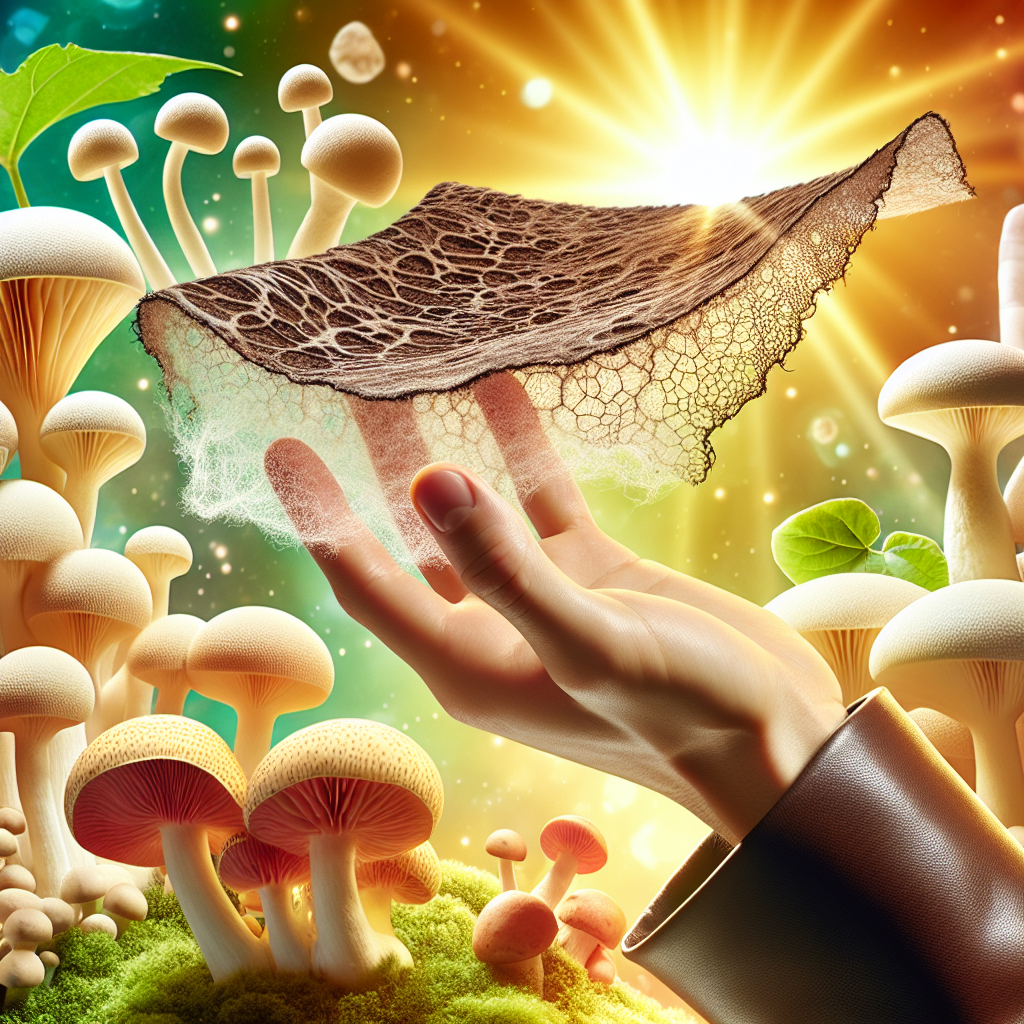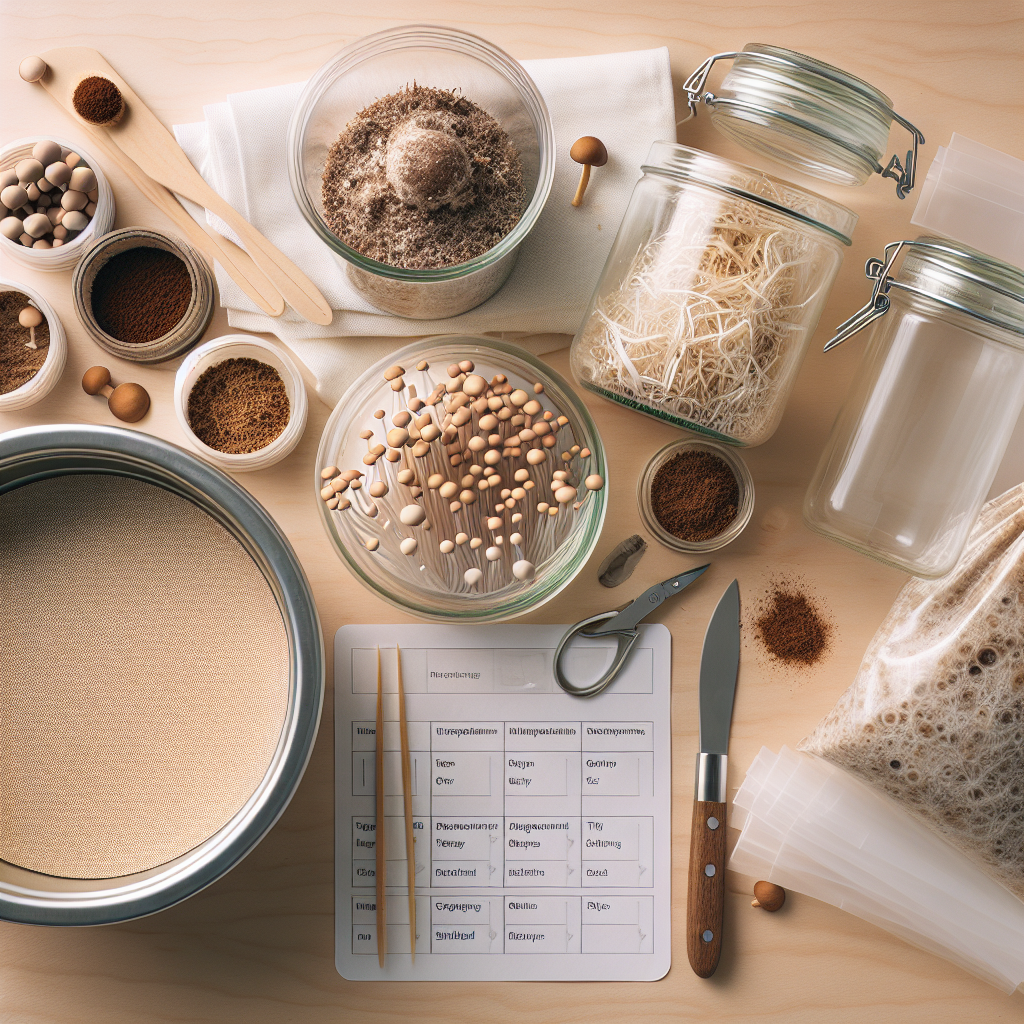In this comprehensive guide, “Guide to Making Mycelium Fabric at Home”, you’ll uncover the fascinating process of creating sustainable and biodegradable textile right in your own home. Harnessing the power of fungi, you will be taken through the step-by-step process of creating mycelium fabric, a revolutionary material that is both eco-friendly and remarkably resilient. This exciting exploration will transform the way you understand and interact with the materials in your daily life.

Understanding Mycelium Fabric
Mycelium fabric is a revolutionary material derived from fungal networks known as mycelium. With properties similar to traditional fabric, mycelium fabric represents a unique intersection of biology, technology, and design that has the potential to reshape the textile industry.
Definition of Mycelium Fabric
Mycelium fabric refers to material made from the root system of fungus, called mycelium. Technically, these root systems consist of a network of filaments called hyphae that absorb nutrients and foster the growth of the fungi. When cultivated in controlled environments and subjected to specific treatments, these hyphae form a durable, sustainable fabric-like material known as mycelium fabric.
Origins and History of Mycelium Fabric
The concept of using mycelium for materials is not a new one—historically, people have used mycelium for many purposes, including food, medicines, and dyes. However, the application of mycelium in textile manufacturing is a relatively recent innovation. The idea originated in biomaterial research laboratories in the early 2000s, where researchers were exploring the potential of mushroom-derived materials like mycelium as an alternative to traditional textiles.
Properties and Characteristics of Mycelium Fabric
The most notable characteristic of mycelium fabric is its sustainability. Contrary to traditional fabrics that often require extensive resources to produce and can leave behind harmful byproducts, mycelium fabric is biodegradable and demands significantly less water and energy for its production. In terms of physical properties, it is highly versatile, and its texture and strength can be adjusted depending on its cultivation conditions. Also, it boasts excellent insulation properties which adds to its uniqueness.
Benefits and Uses of Mycelium Fabric
The utilization of mycelium fabric carries numerous benefits. Firstly, it is eco-friendly, thereby aiding in the reduction of environmental pollution. Secondly, it’s renewable and promotes the circular economy approach. As for its uses, mycelium fabric could potentially replace leather, as it can be treated to replicate a leather-like texture and appearance. Additionally, it can be used in various sectors, including fashion, furniture, and biodegradable packaging.
Basic Components Needed
The process of making mycelium fabric at home is relatively straightforward. However, you will need the following basic components:
Mushroom Spores or Mycelium Starter
You will need either mushroom spores or a mycelium starter culture. These can usually be located at local garden centres or ordered online.
Growth Medium or Substrate
Mycelium requires a growth medium, also called a substrate, to grow. This can be made from organic matter, such as straw, wood chips, or coffee grounds.
Sterilized Containers
Sterilized containers are essential for preventing contamination during the growth process. These containers can be as simple as jar lids or plastic containers, as long as they can be sterilized and offer some provision for ventilation.
Environmental Control Tools
The tools for controlling temperature and humidity in the growing environment are crucial. Simple thermometers and hygrometers serve this purpose, alongside devices for controlling heat and moisture levels.
Creating a Sterile Environment
To grow mycelium successfully, you need to create a sterile environment. This is vital because it prevents unwanted elements like bacteria and other fungi from outcompeting the mycelium during the growing process.
Importance of Sterility in Mycelium Fabric Production
The process of cultivating mycelium is sensitive, and the presence of contamination can inhibit the mycelium growth, ruin the property of the fabric, or result in an entirely unsuccessful growth.
Sterilizing Your Tools and Workspace
Before you start, ensure to clean and sterilize your workspace and all the tools you will use. This can be done using heat, radiation, or chemical sterilants.
Preparing Your Containers
Your containers need to be sterilized before use to avoid the introduction of contaminants. This can be done by boiling or using a pressure cooker.
Preparing the Substrate
Your substrate material will provide the essential nutrients needed for the growth of your mycelium.
Choosing Your Substrate Material
The choice of substrate material depends on the mushroom species you are cultivating. Some common options include straw, wood chips, and coffee grounds.
Preparing and Sterilizing Your Substrate
The substrate needs to be sterilized to prevent competition from other organisms. This can often be accomplished by baking or pressure cooking.
Cooling and Storing Prepared Substrate
After sterilization, allow the substrate to cool completely before inoculating with mycelium. Store it in a sterile environment until you are ready to use it.
Inoculating the Substrate with Mycelium
Inoculating the substrate involves introducing the mycelium to its growing medium.
Acquiring and Handling the Mycelium Starter
Ensure the mycelium starter you have acquired is viable and uncontaminated. Handle this culture with sterile gloves to avoid introducing contaminants.
Transferring the Mycelium to the Substrate
Mix your mycelium starter with the cooled, sterilized substrate in a sterile container. Make sure the container lid is secured but allows for some airflow for the mycelium to respirate.
Storing the Inoculated Substrate
The inoculated substrate should be stored in a warm, dark place for optimal mycelium growth.
Cultivating the Mycelium
Cultivating the mycelium involves managing environmental conditions to facilitate its growth.
Understanding Ideal Mycelium Growth Conditions
Mycelium thrives best in warm, humid and dark conditions. Protecting it from potential contaminants and pests is crucial.
Providing Correct Temperature and Humidity
A consistent and ideal temperature between 70-75°F and humidity above 85% are essential for mycelium growth.
Monitoring and Adjusting Environment as Needed
Monitor the environmental conditions regularly and make necessary adjustments. Provide ventilation, but prevent drying out.
Harvesting the Mycelium
Once the mycelium has fully colonized the substrate, it’s ready for harvesting.
Signs Your Mycelium is Ready to Harvest
Your mycelium is ready for harvest once the entire substrate has been colonized and turns white, with a somewhat fluffy or cottony appearance.
Properly Harvesting Mycelium Without Damaging It
Use sterilized tools to carefully harvest the mycelium. Try not to damage the hyphal networks when removing them from the substrate.
Storing Harvested Mycelium for Fabric Making
After harvesting, wash, and drain the mycelium then store in a cool environment before starting the fabric-making process.
Processing the Mycelium into Fabric
The harvested mycelium now undergoes processing to become fabric.
Cleaning and Prepping Mycelium for Processing
Ensure to thoroughly clean the harvested mycelium with water to remove any residues of the substrate.
Creating a Mycelium Paste
Blend the clean mycelium to create a paste. This paste forms the basic medium to create mycelium fabric.
Spreading and Drying out Mycelium Paste into Fabric
Spread the mycelium paste evenly on a flat surface, in the thickness you want the final fabric to be. Allow the paste to dry completely at room temperature.
Finishing the Mycelium Fabric
The final stages involve processing the dried mycelium fabric into its final form.
Additional Drying and Curing Processes
Additional drying may be necessary for thicker fabrics. The fabric may also undergo a curing process to enhance its durability.
Tailoring and Shaping Mycelium Fabric to Desired Form
The dried and cured mycelium fabric can be tailored and shaped to your desired form, similar to conventional fabrics.
Preserving and Caring for Mycelium Fabric
Proper care will ensure the longevity of your mycelium fabric. It must be protected from extreme weather conditions, heavy stress, or exposure to chemicals.
Potential Applications of Homemade Mycelium Fabric
There are boundless applications for mycelium fabric, thanks to its versatility and sustainability.
In Clothing and Fashion
Mycelium fabric is a promising candidate for sustainable fashion, producing eco-friendly alternatives to traditional materials like denim, cotton, and leather.
In Furniture Design and Decoration
Furniture and interior design sectors can benefit from using mycelium fabric for upholstery and other decorative elements.
In Biodegradable Products and Packaging
The potential for mycelium fabric extends to the manufacturing of biodegradable products like disposable utensils and packaging—reducing plastic pollution and advancing a zero-waste society.
In conclusion, mycelium fabric represents a breakthrough in sustainable material exploration. Although still in its early stages of development and adoption, it holds the potential to revolutionize various industries, making the skill of creating mycelium fabric not only an engaging hobby but a potentially invaluable tool for sustainable design in the future.
